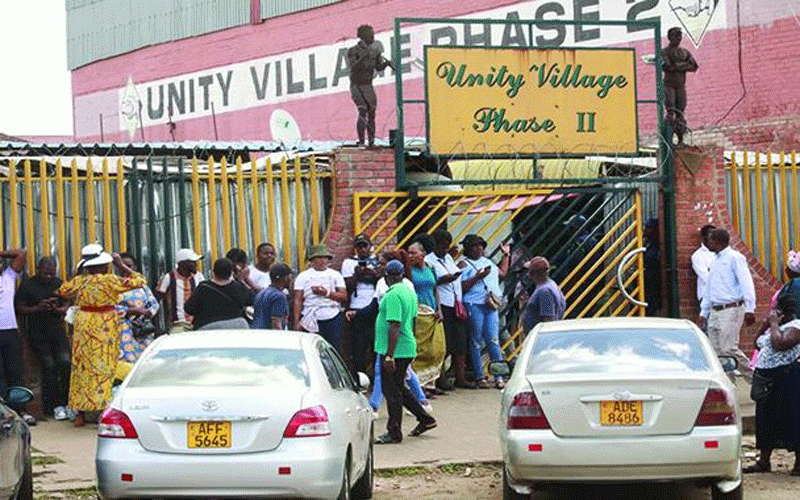IN a modern world where transportation can be in the blink of an eye, it is unimaginable that a three-kilometre journey takes ages.
But a journey on a dilapidated train owned by National Railways of Zimbabwe (NRZ) proved this nightmarish reality, while being a stark reminder of the challenges outdated infrastructure can cause.
Zimbabwe’s train transportation system is largely an inheritance of the Rhodesian Railway Limited which created much of the present-day infrastructure in the late 1890s. With the railway tracks which were last upgraded in the 1950s and the rail wagons dating back to the same era, it is more than amazing that President Emmerson Mnangagwa touted this medieval railway system as the solution to the country's transport woes when the government reintroduced the commuter train system in 2021.
After commemorating the Railway Safety Week at Paisely Rail/Road Crossing, three kilometres from Harare’s central business district on Wednesday last week, all the dignitaries including journalists were asked to board the train to the main Harare Station.
Passengers, filled with anticipation, boarded the train with a mix of curiosity and trepidation.
Although short in distance, the journey was far from pleasant, marred by a stench so unbearable that it left passengers gasping for fresh air.
Keep Reading
- Mr President, you missed the opportunity to be the veritable voice of conscience
- ED to commission new-look border post
- Zanu PF ready for congress
- EU slams Zim over delayed reforms
As the train chugged along the tracks, it became evident that time had taken its toll on this relic of a by-gone era. The worn-out exterior and rusty metal gave the train a weathered appearance, hinting at the challenges that lay ahead.
From the moment the doors closed, a pungent stench permeated the air, causing noses to wrinkle in disgust. The odour, a combination of mustiness and decay, seemed to have seeped into the nooks and crannies of the train.
It was a reminder of the lack of maintenance and upkeep that had plagued Zimbabwe’s rail transportation, which is now light-years away from other nations where bullet trains are transporting passengers at lightning speeds of over 300km an hour.
Inside the train, refurbished seats with patched upholstery provided little comfort.
The once-vibrant colours had faded, mirroring the fading glory of the country’s rail travel.
Guests tried their best to find a seat that was least affected by years of wear and tear, but their efforts were in vain.
As the train set off, it became apparent that the outdated engine was struggling to maintain a steady pace. The jerky movements and occasional jolts made it difficult for passengers to find their balance. The lack of proper suspension and shock absorbers only added to the discomfort, leaving passengers longing for an early arrival to their destination.
The three-kilometre journey felt like eternity. The slow pace, combined with the constant stops and starts, tested the patience of even the most seasoned travellers.
To make matters worse, the train was powered by a diesel locomotive which emitted thick plumes of smoke that filled the air. The acrid smell of burning fuel mixed with the already unbearable stench, creating a suffocating atmosphere inside the train.
Some passengers coughed and covered their noses, desperately seeking relief from the noxious fumes.
Journalists exchanged glances of disbelief, wondering how such a short distance could feel so arduous and never-ending.
“We are 70 years behind compared to other countries that now have bullet trains,” said one journalist.
The stench, which seemed to grow stronger with each passing minute, became an unwelcome companion throughout the journey.
It clung to clothes and lingered in the air, leaving a lasting impression on all who undertook the journey. The unbearable smell was a stark reminder of the urgent need for investment in modernising Zimbabwe's railway infrastructure.
The depleted state of the train was not the only issue. The railway line itself showed signs of neglect and depletion. Overgrown vegetation encroached on the tracks and sections of the railway line had deteriorated, making the short journey even more treacherous. One could not even dare to imagine a longer trip.
It was a clear indication that the lack of investment in infrastructure had taken its toll on Zimbabwe's railway system.
Speaking on behalf of Transport minister Felix Mhona, the ministry’s human resources director Beaven Murungweni expressed worry over the vandalism of railway infrastructure.
He highlighted the importance of maintaining and protecting the railway system, because it plays a crucial role in the country's transportation network.
"The vandalism of railway infrastructure is not only a criminal act, but also endangers the lives of innocent people. We must work together to ensure the safety and security of our railways," he said.
While the Transport minister urged relevant authorities to enhance security measures and intensify efforts to combat vandalism, sheer neglect appears to be posing more serious threat than theft and destruction of the infrastructure.
Even his call for collaboration between NRZ, law enforcement agencies and local communities to safeguard railway infrastructure sounded hollow when no tangible investment has been put in the railways. It sounds like a fairy tale that the country once had electric trains.
Little wonder this year alone, railway accidents have claimed six lives in 32 accidents according to NRZ acting general manager Ainah Dube-Kaguru.
"So far this year, we have recorded 32 level-crossing accidents in which six people were killed compared to 24 last year which resulted in two deaths, while in 2021 had 10 accidents with one death," she said.
As the journey finally came to an end, passengers disembarked filled with a mixture of relief and disappointment. The depleted 1957 train had provided a glimpse into the challenges faced by NRZ and the urgent need for improvement.
It served as a reminder that investing in modern transport infrastructure is not only a matter of convenience, but also a necessity for the well-being and comfort of the people.





